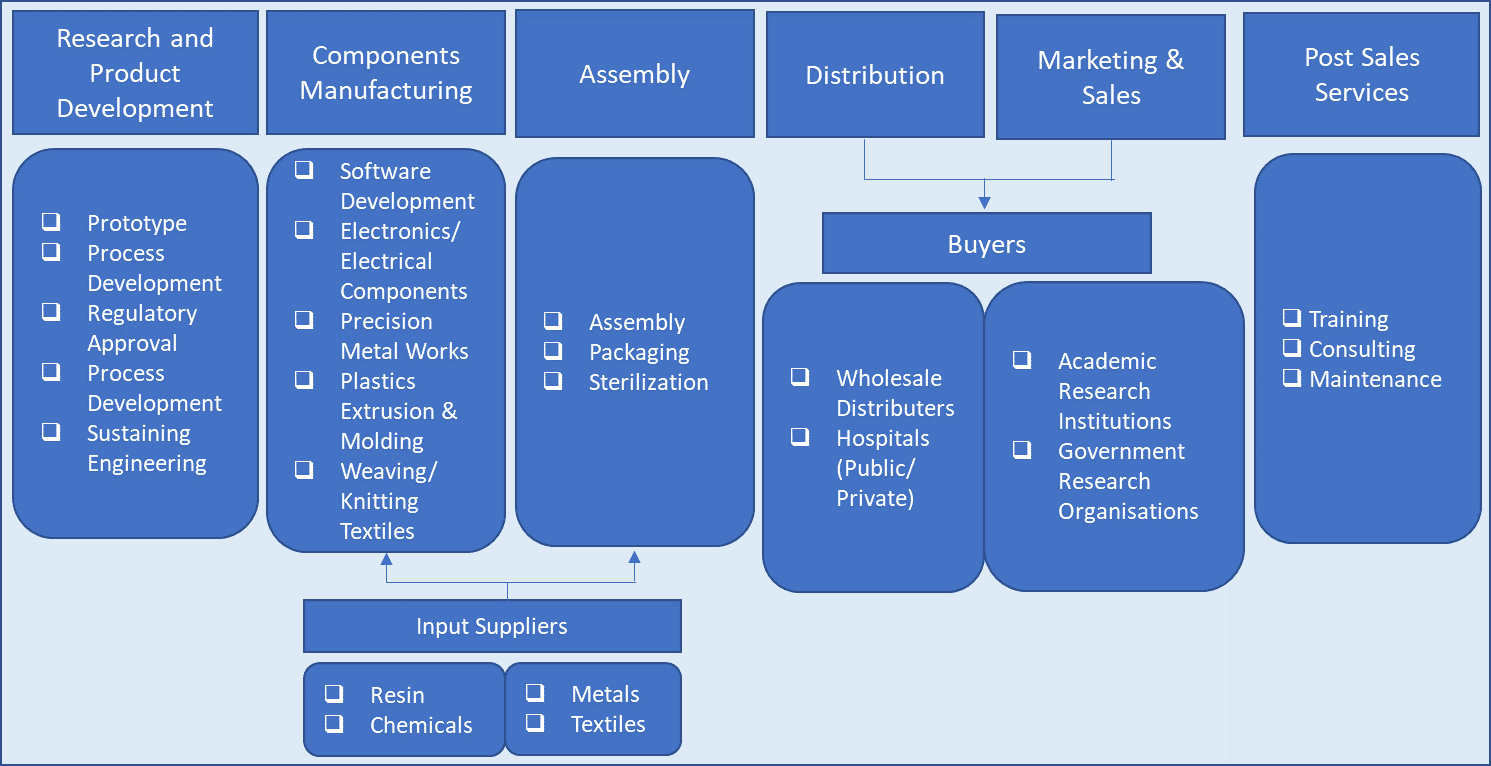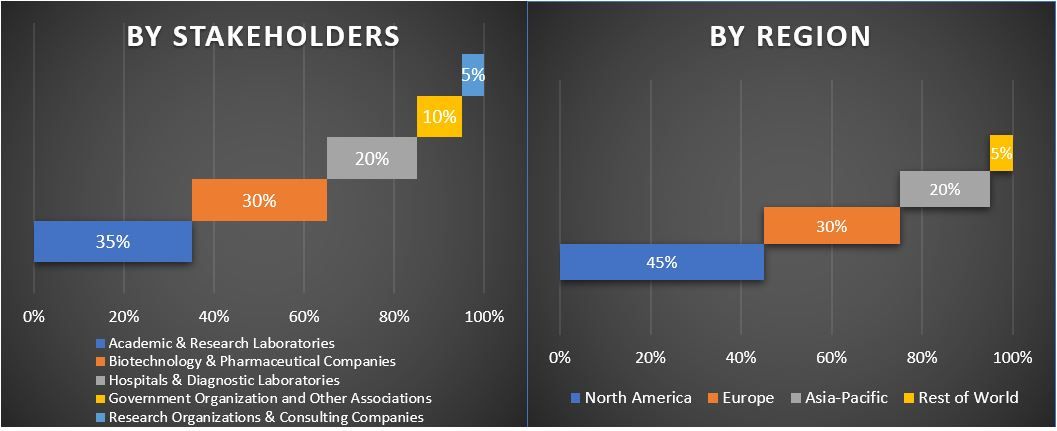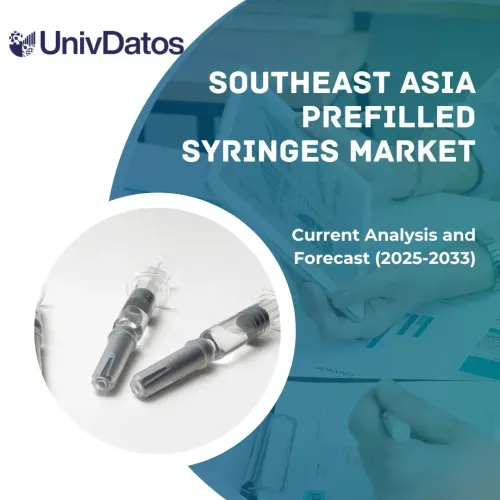- Home
- About Us
- Industry
- Services
- Reading
- Contact Us
Flow Cytometry Market: Current Analysis and Forecast (2021-2027)
Emphasis on Product (Instruments, Reagents & Consumables, Replaceable Components, Accessories, Software, Services); Technology (Cell-Based, Bead-Based); Application (Research, Clinical, Industrial); End-User (Academic & Research Institutes, Hospitals & Clinical Testing Laboratories, Pharmaceutical & Biotechnology Companies); Region and Country

Flow Cytometry Market was valued at US$ 5.5 billion in 2020 and is expected to grow at a CAGR of 8% over the forecast period (2021-2027). Flow Cytometry is an impedance-based technology that is used for cell sorting, counting, and detecting biomarkers in protein engineering. The flow cytometer facilitates the evaluation of physical and chemical characteristics of thousands of particles and is majorly used in the diagnosis of health disorders, such as cancer, HIV AIDS, and Immunological disorders. For instance, in January 2021, Becton, Dickinson and Company, announced advancement in immunology research by enabling researchers to investigate 30 immune markers in a single experiment. Further, the growing technological advancements in flow cytometers are also burgeoning the growth of the flow cytometry industry. In September 2020, Agilent Technologies Inc. launched the Agilent NovoCyte Penteon, a sensitive flow cytometer with five lasers and up to 30 fluorescence channels.
Moreover, the increasing cases of cancer and other chronic diseases are adding pace to the growth of the flow cytometry market. According to the Office of Disease Prevention and Health Promotion, more than 25 million people in the United States suffer from asthma and more than 14.8 million adults are diagnosed with COPD, and nearly 12 million people are not yet been diagnosed with respiratory diseases in 2020. Also, as per the American Cancer Society, in 2020, there were approximately 89,500 cancer cases diagnosed and about 9,270 cancer deaths in adolescents and young adults aged between 15 to 39 years in the US in 2019. The covid-19 pandemic has impacted the Flow Cytometry market positively. As the increasing number of researches to find the cure of Covid-19 have increased the demand for flow cytometers among researchers to get accurate results of their experiments. For instance, in September 2020, Cytek Biosciences Inc. supported scientists and researchers worldwide in studying the impact of the Covid-19 virus on human immune systems and positions the company on a path to offering a complete spectral flow cytometry solution to the European market from instruments to reagents.
Value Chain Analysis of Flow Cytometry Market

Thermo Fisher Scientific, Beckman Coulter, Inc., Danaher Corporation, Becton, Dickinson and Company, Luminex Corporation, Agilent Technologies, Inc., Bio-Rad Laboratories, Inc., Miltenyi Biotec, Apogee Flow Systems Ltd., and Sony Biotechnology, Inc. are some of the prominent players operating in the flow cytometry market. Several M&As along with partnerships have been undertaken by these players to facilitate customers with hi-tech and innovative products.
Insights Presented in the Report
“Amongst Product, Reagents and Consumables segment holds the major share”
Based on product, the market is bifurcated into instruments, reagents & consumables, replaceable components, accessories, software, and services. The reagents & consumables segment grabbed the major market in 2020 due to their augmented implementations in diagnostic and research fields. Moreover, the overview of multiplex probes and reagents for precise applications in diagnostics as well as drug discovery is anticipated to increase the growth opportunities of this segment in research laboratories and small peripheral laboratories.
“Amongst Technology, Bead-Based segment is anticipated to grow at the highest CAGR during the analyzed period”
Based on technology, the market is bifurcated into cell-based and bead-based technologies. The bead-based segment ruled the market and accounted for the maximum share in 2020 due to the practical advantages presented by this technology over the cell-based technology (such as ELISA, northern blot, and western blot), comprising its ability to spot multiple analytes, high reproducibility, stability, and speed.
“Amongst Application, Research Application segment holds the major share”
Based on application, the market is bifurcated into research applications, clinical applications, and industrial applications. The research applications segment grabbed the major market in 2020. The highest share of this segment can be attributed to the increasing R&D activities connected to cancer and infectious diseases, including Covid-19.
“Amongst End-users, Hospitals & Clinical Testing Laboratories segment holds the major share”
Based on end-user, the market is bifurcated into academic & research institutes, hospitals & clinical testing laboratories, and pharmaceutical & biotechnology companies. The hospitals & clinical testing laboratories segment ruled the market and accounted for the maximum share in 2020 due to the increasing number of research for chronic diseases like cancer, HIV AIDS, Immunological disorders including Covid-19.
“North America signifies one of the largest markets of Ventricular assist devices market”
For a better understanding of the market, a detailed analysis was conducted for different regions across the globe including North America (United States, Canada, and the Rest of North America), Europe (Germany, France, Italy, Spain, United Kingdom and Rest of Europe), Asia-Pacific (China, Japan, India, Australia, and Rest of APAC), Rest of World. North America constitutes a major market for flow cytometry and generated maximum revenue in 2020 owing to the high government funding, robust personal healthcare spending, developed awareness programs, rapid acceptance of new analytical techniques, and the presence of skilled workforces.
Reasons to buy this report:
- The study includes market sizing and forecasting analysis validated by authenticated key industry experts
- The report presents a quick review of overall industry performance at one glance
- The report covers an in-depth analysis of prominent industry peers with a primary focus on key business financials, product portfolio, expansion strategies, and recent developments
- Detailed examination of drivers, restraints, key trends, and opportunities prevailing in the industry
- The study comprehensively covers the market across different segments
- Deep dive regional level analysis of the industry
Customization Options:
Flow Cytometry Market can further be customized as per the requirement or any other market segment. Besides this, UMI understands that you may have your own business needs, hence feel free to connect with us to get a report that completely suits your requirements.
Table of Content
Analyzing the historical market, estimation of the current market, and forecasting the future market of the Global Flow Cytometry were the three major steps undertaken to create and analyze the adoption of flow cytometry in different segments across major regions globally. Exhaustive secondary research was conducted to collect the historical market numbers and estimate the current market size. Secondly, to validate these insights, numerous findings and assumptions were taken into consideration. Moreover, exhaustive primary interviews were also conducted, with industry experts across the value chain of the flow cytometry sector. Post assumption and validation of market numbers through primary interviews, we employed a top-down/bottom-up approach to forecast the complete market size. Thereafter, market breakdown and data triangulation methods were adopted to estimate and analyze the market size of segments and sub-segments the industry pertains to. Detailed methodology is explained below:
Analysis of Historical Market Size
Step 1: In-Depth Study of Secondary Sources:
Detailed secondary study was conducted to obtain the historical market size of the flow cytometry through company internal sources such as annual reports & financial statements, performance presentations, press releases, etc., and external sources including journals, news & articles, government publications, competitor publications, sector reports, third-party database, and other credible publications.
Step 2: Market Segmentation:
After obtaining the historical market size of the flow cytometry market, we conducted a detailed secondary analysis to gather historical market insights and share for different segments for major regions. Major segments included in the report are product, technology, application, and end-user. Further country-level analyses were conducted to evaluate the overall adoption of flow cytometry in every region.
Step 3: Factor Analysis:
After acquiring the historical market size of different segments and sub-segments, we conducted a detailed factor analysis to estimate the current market size of flow cytometry. Further, we conducted factor analysis using dependent and independent variables such as growing acceptance of flow cytometry techniques in research activities and clinical trials and the high incidence and prevalence of HIV-AIDS and cancer research will upsurge the demand for flow cytometry. A thorough analysis was conducted for demand and supply-side scenarios considering top partnerships, merger and acquisition, business expansion, and product launches in the Flow Cytometry industry across the globe.
Current Market Size Estimate & Forecast
Current Market Sizing: Based on actionable insights from the above 3 steps, we arrived at the current market size, key players in the Flow Cytometry market, and market shares of the segments. All the required percentage shares split, and market breakdowns were determined using the above-mentioned secondary approach and were verified through primary interviews.
Estimation & Forecasting: For market estimation and forecast, weights were assigned to different factors including drivers & trends, restraints, and opportunities available for the stakeholders. After analyzing these factors, relevant forecasting techniques i.e., the a top-down/bottom-up approach was applied to arrive at the market forecast about 2027 for different segments and subsegments across the major markets globally. The research methodology adopted to estimate the market size encompasses:
- The industry’s market size, in terms of value (USD) and the adoption rate of flow cytometry across the major markets domestically
- All percentage shares, splits, and breakdowns of market segments and sub-segments
- Key players in the flow cytometry market in terms of services offered. Also, the growth strategies adopted by these players to compete in the fast-growing market
Market Size and Share Validation
Primary Research: In-depth interviews were conducted with the Key Opinion Leaders (KOLs) including Top Level Executives (CXO/VPs, Sales Head, Marketing Head, Operational Head, and Regional Head, Country Head, etc.) across major regions. Primary research findings were then summarized, and statistical analysis was performed to prove the stated hypothesis. Inputs from primary research were consolidated with secondary findings, hence turning information into actionable insights.
Split of Primary Participants in Different Regions
Market Engineering
Data triangulation technique was employed to complete the overall market estimation and to arrive at precise statistical numbers of each segment and sub-segment of the flow cytometry market. Data was split into several segments & sub-segments post studying various parameters and trends in the areas of product, technology, application, and end-user of the flow cytometry market.
Main Objective of the Flow Cytometry market Study
The current & future market trends of flow cytometry are pinpointed in the study. Investors can gain strategic insights to base their discretion for investments from the qualitative and quantitative analysis performed in the study. Current and future market trends would determine the overall attractiveness of the market at a regional level, providing a platform for the industrial participant to exploit the untapped market to benefit as a first-mover advantage. Other quantitative goals of the studies include:
- Analyze the current and forecast market size of flow cytometry in terms of value (USD). Also, analyze the current and forecast market size of different segments and sub-segments
- Segments in the study include areas of product, technology, application, and end-user
- Define and analysis of the regulatory framework for the flow cytometry industry
- Analyze the value chain involved with the presence of various intermediaries, along with analyzing customer and competitor behaviors of the industry
- Analyze the current and forecast market size of the flow cytometry market for the major region
- Major regions studied in the report include North America (the United States and Canada), Europe (Germany, France, Italy, Spain, and United Kingdom), Asia-Pacific (China, Japan, India, and Australia), and Rest of the World
- Company profiles of the flow cytometry market and the growth strategies adopted by the market players to sustain in the fast-growing market
- Deep dive country level analysis of the industry
Related Reports
Customers who bought this item also bought











